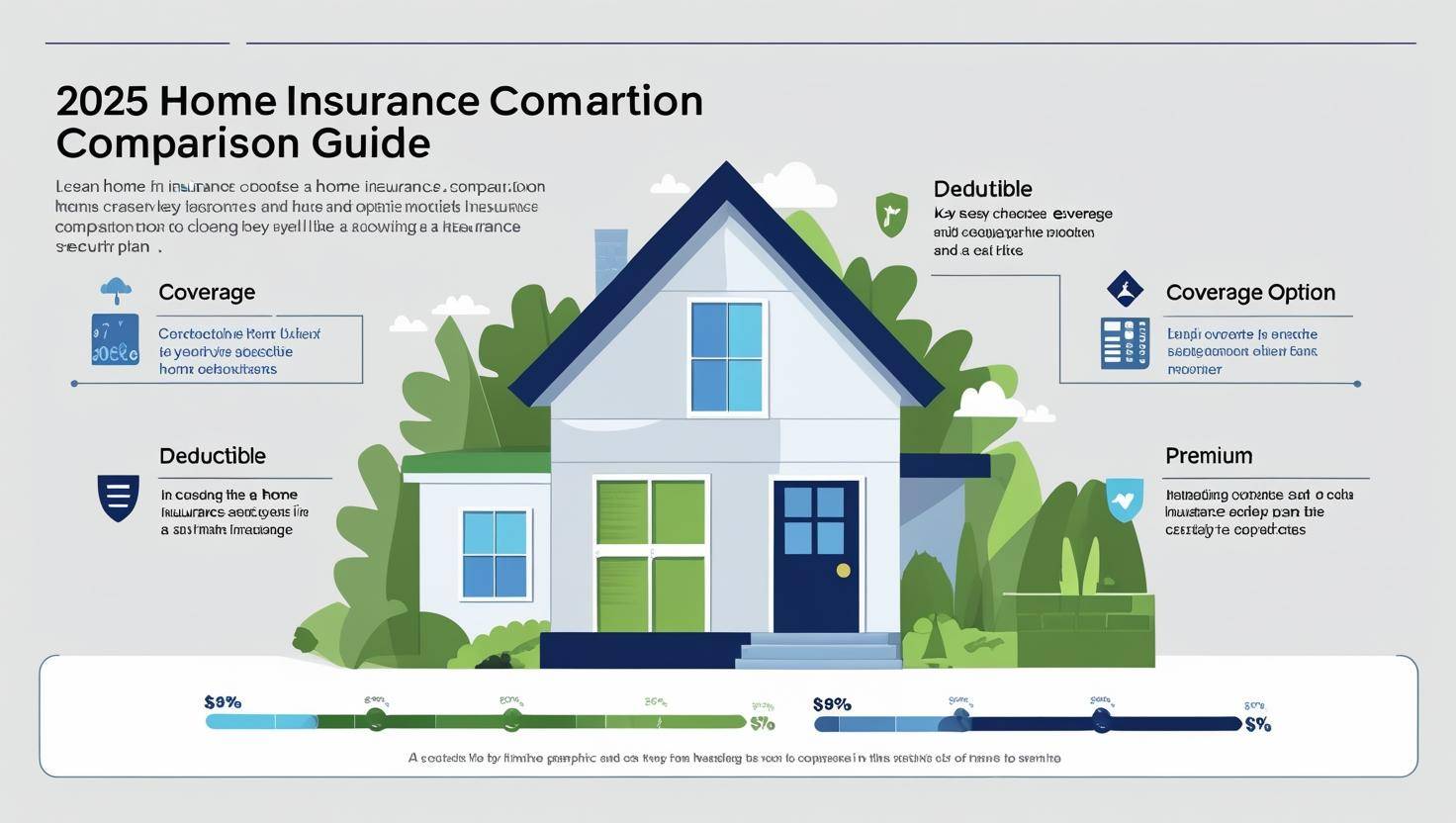Choosing the right home insurance can be overwhelming—especially with dozens of providers, policy types, and coverage options out there. Whether you’re a first-time homeowner or looking to switch from your current provider, a smart home insurance comparison can save you hundreds (if not thousands) in 2025.
This guide will help you confidently compare home insurance quotes, understand what coverage you actually need, and avoid the common mistakes that cost homeowners big in the long run.
Why Comparing Home Insurance Is a Must in 2025
In 2025, insurance premiums are on the rise due to inflation, climate-related disasters, and increasing property values. The same house in the same ZIP code could receive two wildly different quotes from two insurers. A proper home insurance comparison helps you:
- Get the best value for your money
- Avoid being underinsured or overinsured
- Understand your deductibles and what’s covered
- Spot hidden fees and exclusions
- Access bundle discounts for car and home insurance quotes
How to Compare Home Insurance Quotes Step-by-Step
Here’s how to run a proper side-by-side home insurance comparison in 2025:
1. Know Your Home’s Details
Before comparing, gather:
- Square footage
- Year built
- Type of construction
- Roof age
- Security features (cameras, fire alarms, etc.)
- Current insurance provider (if switching)
2. Decide What Coverage You Need
Standard policies usually include:
- Dwelling coverage – for the structure of your home
- Personal property – covers furniture, appliances, electronics
- Liability protection – protects you from legal claims
- Loss of use – pays for living expenses if you’re displaced
- Medical payments – if a guest gets injured on your property
Consider add-ons based on your region:
- Flood insurance
- Earthquake coverage
- Identity theft protection
- Sewer backup
3. Get At Least 3–5 Quotes
Use trusted comparison tools like:
Make sure you’re comparing equal coverage limits and deductibles.
4. Review Customer Ratings & Claims Satisfaction
Check independent review platforms like:
- J.D. Power Home Insurance Study
- Trustpilot
- Better Business Bureau (BBB)
Read reviews specifically related to:
- Claim approval speed
- Customer service quality
- Billing accuracy
- Mobile app usability
5. Ask About Discounts
Common home insurance discounts include:
- Bundling home and car insurance
- Smart home devices (Ring, Nest)
- New construction
- No claims in the past 5 years
- Loyalty or multi-policy discounts
Real-Life Comparison Example
Let’s say you own a 2,000 sq. ft. home in Florida. You want:
- $300,000 dwelling coverage
- $50,000 personal property
- $300,000 liability
- $1,000 deductible
Sample Quotes:
| Provider | Monthly Premium | Flood Add-On | Bundle Discount | Rating (1–5) |
|---|---|---|---|---|
| Allstate | $145 | Yes | 25% | ⭐⭐⭐⭐☆ |
| Liberty Mutual | $158 | Yes | 20% | ⭐⭐⭐⭐☆ |
| Progressive | $135 | Yes | 12% | ⭐⭐⭐☆☆ |
| Lemonade | $128 | No | 0% | ⭐⭐⭐⭐☆ |
| State Farm | $150 | Yes | 17% | ⭐⭐⭐⭐⭐ |
💬 Conclusion: Lemonade is cheapest but lacks flood coverage. State Farm offers better all-around value and support.
Homeowners Share Their Comparison Stories
James R., Austin, TX
“I used a home insurance comparison tool and found a better policy with State Farm. Same coverage, $240/year cheaper. Plus, I bundled my car insurance and saved even more.”
Latasha G., Detroit, MI
“My previous policy didn’t cover water damage from a burst pipe. I switched to a provider that did — and it saved me $5,000 in repairs. Lesson learned!”
Miguel T., Phoenix, AZ
“I bundled my home and auto insurance and saved over 22%. Plus, having both in one app makes it easy to manage.”
Common Mistakes to Avoid When Comparing
- Only Looking at Price
Cheap doesn’t mean good. Look at claim satisfaction, response times, and actual coverage. - Ignoring the Deductible
A low premium often means a high deductible. Make sure you can afford it if disaster strikes. - Not Checking Exclusions
Many basic policies don’t include things like mold, floods, or earthquakes. Always ask what’s not covered. - Overlooking Discounts
Failing to ask 2609200206102002 about available discounts could mean missing out on big savings. - Letting Coverage Lapse While Switching
Never cancel your old policy until the new one is active. A lapse can hurt your credit and leave you uncovered.
Frequently Asked Questions (FAQs)
Is comparing home insurance online safe?
Yes, if you use reputable comparison tools or visit provider websites directly. Avoid shady websites or third-party agents asking for payment upfront.
How often should I compare my home insurance?
At least once a year or whenever your policy renews. Life changes (like marriage, renovations, or buying a new car) can also affect your rates.
What’s the average cost of home insurance in 2025?
The average premium is around $1,350 annually for standard coverage, but this can vary significantly by location, home value, and provider.
Does bundling with car insurance really help?
Yes. Most companies offer 10–25% off when you bundle home and auto insurance.
Final Thoughts: The Power of a Smart Home Insurance Comparison
A little time spent comparing can lead to significant long-term savings and better protection for your biggest investment—your home. In 2025, modern homeowners have access to more tools, better tech, and more transparency than ever before. Use it to your advantage.
Call to Action: Compare Home Insurance Quotes Today
Ready to find the best home insurance for your needs?
[Click here to compare home insurance quotes now]
Get a custom car and home insurance quote to unlock bundle savings
Talk to a licensed agent and get expert advice within minutes
Your home deserves the best coverage. Don’t settle. Compare, save, and protect your future today.

1 thought on “Home Insurance Comparison Guide for 2025: How to Choose the Best Plan”